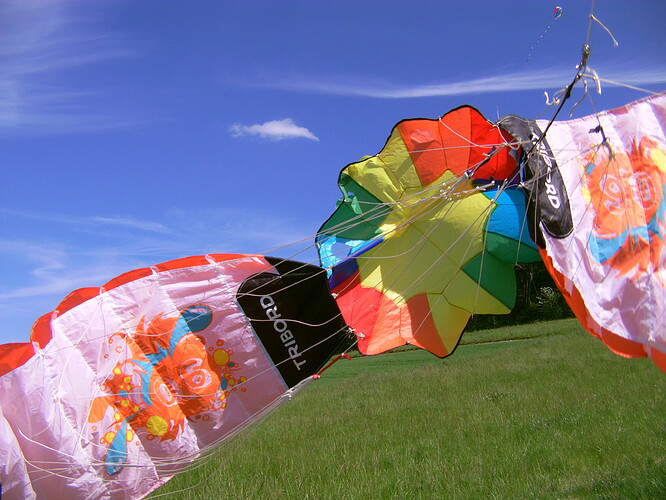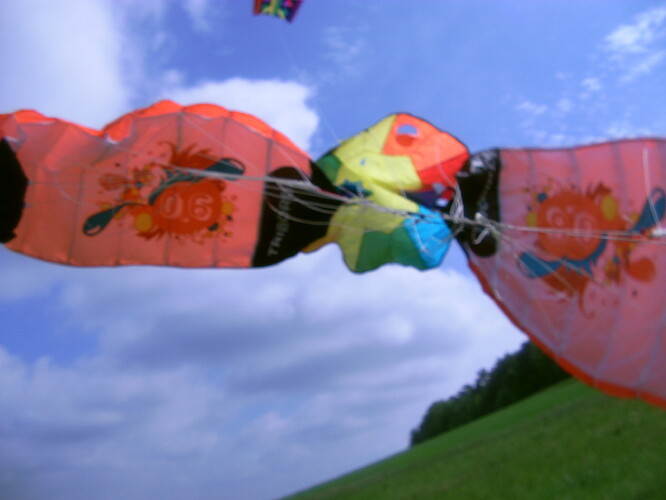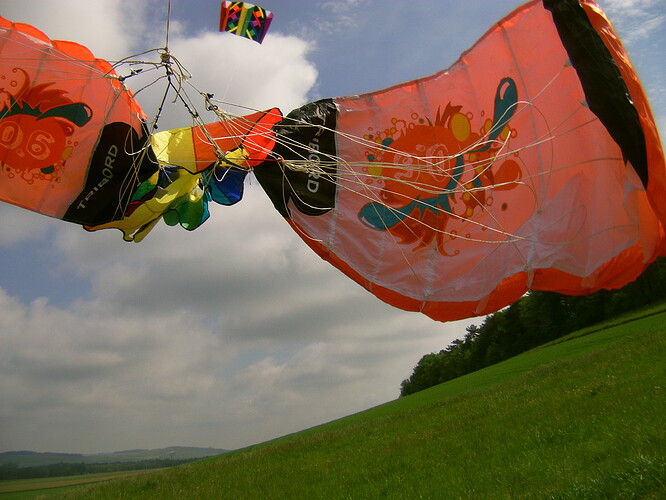Thanks for your feedback @tallakt.
Yes. As (in a first approach) the blades are parallel to the basis of the round kite, a very high angle of attack (AOA) is required to mitigate cosine loss of the blades. It is the reason why I thought about a parachute kite which usually flies with a very high AOA, above 30 degrees as indicated by chinese umbrella description.pdf.
Yes. Perhaps it can be good if the rope drive system can be implemented.
I fear it too.
Sure, but by making it, you loss the PTO at the periphery of the parachute and the inner rotor, where the linear speed is high, and where rope drive and high speed generator aloft systems could be implemented.
I can have this problem. A possible solution would be using multi anchors on the ground. But my initial experiments were not successful in this regard.
I agree with your reservations. That said I mentioned these designs because I am not quite sure that mentioned problems cannot be overcome. If they could be, I would see two possible advantages as relatively light PTO (rope drive or flygen systems) could be implemented, and the reachable altitude would be less limited (as for @Kitewinder Kiwee). Thus the chance of implementation remains limited.
But this topic concerns also the rotor rotating with the central parachute as shown on the video (tiny lifting kite of 0.2 m², wing span 125 cm, parachute diameter 90 cm, diameter of the whole rotor 340 cm, elevation angle of less than 10 degrees with said tiny lifting kite). In this case the parachute is no longer really a kite because it turns. It is the same for the wings. The rotor is only a pull device that could be used in pumping mode as for RotoKite. A minor advantage of the central parachute is increasing rotor diameter. But I see another possible advantage for studying an easier control of depower mode during reel-in phase.
With the tiny lifting kite of 0.2 m²:
The same with a larger lifting kite of 2 m²:


